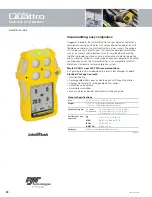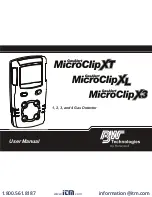
SPEED
MONITORING
23
Whistler Laser-Radar detectors receive all current laser guns
which operate at a laser wavelength of 905 +/- 50nm including
but not limited to the following:
•
Ultra Lyte
•
LTI 20-20
•
LTI TruSpeed® S
•
Laser Ally
•
Pro Laser™ I II III
•
Laser Atlanta® Stealth Mode
Laser Tips
If you are the targeted vehicle, a laser gun can often determine
your speed within a few seconds after you receive an alert. In
this situation, there is generally no time to safely adjust your
speed. However, if you are traveling near or behind the targeted
vehicle and receive an alert, response time should be sufficient.
Any laser alert, regardless of duration, requires immediate
action.
Radar Facts
A radar gun operates by transmitting radio waves at certain
frequencies which reflect off objects and are picked up by the
radar gun’s receiving section. When a radar beam reflects off a
moving target, a measurable frequency shift occurs. The radar
unit converts this shift into miles per hour to determine your
vehicle’s speed. Currently, the FCC (Federal Communications
Commission) permits operation of traffic radar guns at X Band
(10.500 - 10.550 GHz), K Band (24.050 - 24.250 GHz), and Ka
Band (33.400 - 36.000 GHz).
NOTE:
A radar detector will only alarm if an officer is
transmitting on any one of the above radar bands.
Radar Detector Detectors: VG-2, Spectre
The Interceptor VG-2 or simply VG-2, is one type of microwave
receiver used by Police to detect signals radiated by the local
oscillator of a radar detector. Because its purpose is to identify
persons driving with radar detectors, these devices are known as
a “radar detector detector” (RDD).
An RDD is the primary tool used by the police to identify radar
detector equipped vehicles. If caught in a state or country where

































